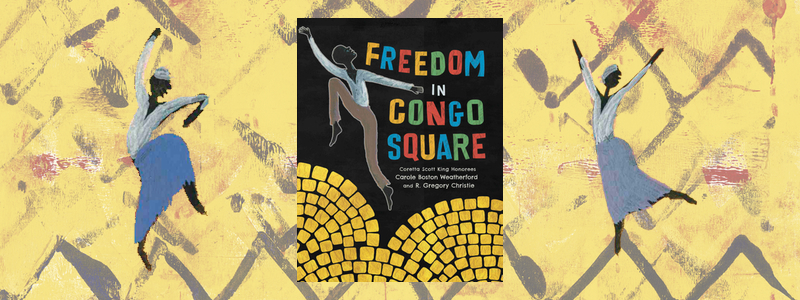Dear Friends,
Have you heard of Congo Square in New Orleans? I hadn’t, until the summer of 2014. I was browsing through The New York Times Book Review when my eyes landed on a write-up for Song of the Shank. The review mentioned Congo Square, and I thought, What’s Congo Square? So of course I googled it—and I was really surprised by what I learned:
In New Orleans in the 1800s, enslaved people would gather in Congo Square on Sundays. They would set up their markets, play music, and sing and dance freely to African-style music. African music was suppressed in the Protestant colonies at the time, so Congo Square became famous and attracted people from all over the country. Even those who weren’t enslaved would gather and watch this event.
My interest was piqued, and after a little more digging, I realized that there were no children’s books on the subject. It was the perfect opportunity to educate young readers on this piece of American history! We decided to call this book Freedom in Congo Square, since the enslaved people were, in a sense, free on Sunday afternoons. And then came the task of finding just the right author and illustrator to bring this to life.
I had long admired the poetic work of Carole Boston Weatherford and the art of R. Gregory Christie, so I reached out to this dynamic duo. I was thrilled when they both embraced this project. Carole’s rhythmic, descriptive text captures the essence of the time period, as well as the gravity of the subject matter. Greg Christie’s illustrations are hauntingly beautiful. His bold, graphic style expresses the emotions of the enslaved people so forcefully. We were even more thrilled when historian and Congo Square expert, Freddi Williams Evans, graciously penned the foreword.
It’s been a pleasure to watch this project develop, step by step. Freedom in Congo Square is a beautiful book, and everyone on the little bee books staff is enormously proud to have it on our list. We hope that you’ll love it as much as we do!
—Sonali, Editorial Director


